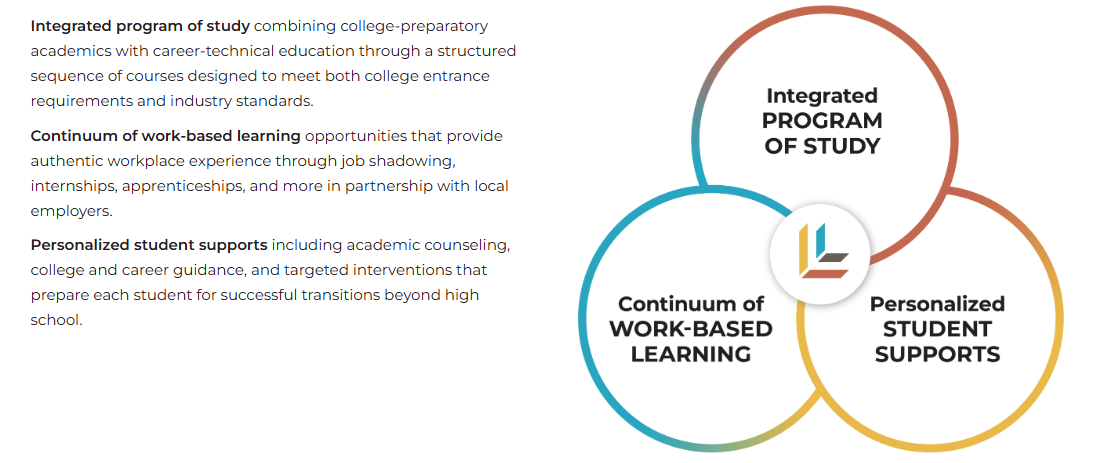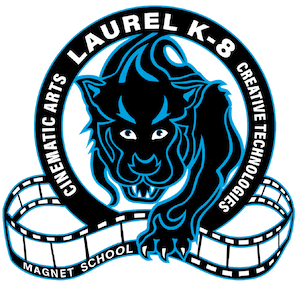Linked Learning & Project-based Learning
Linked Learning
At Laurel Cinematic Arts, we are a CTE-Linked Learning Community school. We believe that the best way to learn is to connect the dots between each subject by integrating the curriculum across classes/subject areas, rather than teaching each subject in a silo. Students should be able to understand why we are learning what we are learning, and how it connects to the world of Cinematic Arts & Creative Technologies. Using the Linked Learning approach, we are able to tap into student interests and show students how their learning connects to the world outside of school. Students engage in showing mastery of each subject area through performance assessments, and project-based units which result in the development of a portfolio of work for both elementary and middle school.
Teachers are facilitators of learning and support students by ensuring they have the resources necessary to build their own understanding of critical skills and concepts. Students leave Laurel CACT ready for high school and the demands of the mid-21st century world. In addition to daily rigorous academics in each subject area, students complete two in depth interdisciplinary projects each year to build their academic skills. These integrated, in-depth projects also showcase students' skills as effective communicators who are adaptable, ethical decision makers and advocates for themselves and others.

Project-based Learning
Project-Based Learning (PBL) is based around the goal of creating a learning environment that will make our students thrive now and into the future. It is an instructional approach that engages students through a number of different methods. When students are presented with a central concept in the curriculum they are encouraged to use various skill-sets that will help them fully understand the depth of the subject matter. PBL incorporates traditional learning (such as mathematics, reading comprehension and auditory assessment) with a more hands on learning style. This approach not only challenges students to see things from different angles, but also teaches to the broad spectrum of learning styles within the classroom. Students do not just read or hear about the subject matter, they then explore the depth of the subject through hands on projects, field-trips, research and inquiry, and connection to the community. Each project-based unit ends with a professional presentation of learning to an audience of peers and experts.
PBL is typically completed in collaborative groups, however, benchmarks are embedded for individual analysis and mastery as well. When children work together towards a common goal they are exposed to different perspectives and learn the value of communication. By introducing these variables the teacher is then able to evaluate each individual’s performance far beyond just subject comprehension. Teachers can evaluate the student’s: depth of comprehension, organization and time management skills, social interaction skills, as well as self reflection and inquiry skills. This model allows students to express their own ideas and opinions about the subject matter and encourages them to make their own decisions based upon what they have learned.
